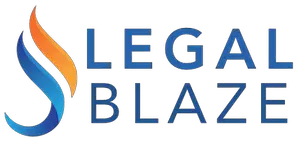Corporate Tax Rate
The corporate tax rate in the US saw a significant shift with the Tax Cuts and Jobs Act (TCJA), implemented at the end of 2017. Before this act, corporations were taxed at a top rate of 35%, which was reduced to 21% under the new law. This change aimed to spur economic growth by leaving more earnings in the hands of businesses for reinvestment and expansion.
Historically, the corporate income tax has been a substantive source of federal revenue. However, its contribution has varied over the decades. In the fiscal year 2022, corporate taxes amounted to $424.7 billion, accounting for 8.7% of all federal revenue and representing 1.7% of the gross domestic product (GDP). The role of corporate taxes as a share of total federal revenue and GDP has declined, particularly since the 1950s through to the mid-1980s, stabilizing to less than two percent of GDP since then.
The TCJA’s cuts were part of broader tax reform measures intended to make the US more competitive by aligning its corporate tax rate closer to the global average. This, in theory, would attract more investment and repatriation of profits held overseas, driving growth within the US economy. It was also expected that companies might pass on some benefits of lower taxes to workers through higher wages, though analyses on this outcome are mixed.
Despite these anticipated benefits, concerns have been raised regarding the long-term implications of reduced tax rates on federal revenue and their potential effect on national debt and funding for critical public services. The immediate aftermath saw an increase in stock buybacks, raising questions about the extent to which the reduced tax rates would trickle down to broader economic benefits for all.
The TCJA not only altered domestic tax obligations for corporations but also substantially reformed the US’s approach to international taxation of its multinational corporations. By adopting a quasi-territorial system and establishing new categories like Global Intangible Low-Taxed Income (GILTI), the reform signaled a new era in corporate taxation aiming to combat base erosion and profit shifting, although the ultimate effectiveness of these provisions remains under scrutiny.
While the reduction in the corporate tax rate under the TCJA offered immediate benefits to corporations, its longer-term impact on the economy, federal revenue, and tax equity continues to unfold, presenting an area ripe for ongoing observation and analysis.
International Tax Changes
With the TCJA’s pivot to a quasi-territorial system, the global operations of US-based multinational corporations entered a new phase. Previously operating under a worldwide tax system where foreign income was subject to US taxation upon repatriation, the shift now paints a different fiscal picture. This altered landscape aims to alleviate the double taxation dilemma and foster a competitive global stance, encouraging US firms to repatriate profits stored offshore without the tax hit of previous years.
At the heart of these international changes are several key components—GILTI, BEAT, and FDII—each serving its distinct purpose and collectively reframing the US’s engagement with global corporate taxation.
- GILTI, or Global Intangible Low-Taxed Income, introduced a minimum tax on overseas earnings, which applies irrespective of whether these profits are brought back to the US. Its philosophy roots in preventing the shifting of profits to low-tax jurisdictions, a maneuver historically favorable under the previous worldwide system. Critics argue, however, this might complicate affairs for firms operating in higher-tax countries or those with genuine financial activities outside the US, potentially placing them at a competitive disadvantage.
- BEAT, the Base Erosion and Anti-abuse Tax, aims to curb companies from stripping earnings out of the US through payments to foreign affiliates, effectively reducing their taxable income in the US. It’s a measure that targets aggressive tax planning strategies, but some worry about its potential side-effects on legitimate business transactions and global tax planning strategies.
- FDII, the Foreign-Derived Intangible Income provision, incentivizes corporations to maintain their intangible assets—like patents and copyrights—within the United States by offering a lower tax rate on foreign-derived income. While fostering innovation on home turf, it stirs debate about its alignment with international trade agreements and whether it truly levels the playing field in global competitiveness or inadvertently benefits some sectors over others.
These provisions marked a turning point, pushing US corporate taxation into more complex waters. Multinational corporations find themselves adjusting to this new regulatory climate, strategizing around these provisions to harness opportunities while navigating potential pitfalls.
The international tax overhaul under TCJA has laid down both challenges and opportunities. As companies navigate this new regime, the broader implications for the US tax base, the global allocation of capital, and international tax harmonization efforts loom large. Observers remain keen, watching how this intricate dance between policy objectives and economic realities will play out in the realm of global corporate operations.
Shareholder-Level Taxes
Beyond corporate taxes and international reforms introduced by the TCJA, we arrive at a juncture that concerns shareholders—the taxation of dividends and capital gains. These are two significant avenues through which investors in corporations might reap the rewards of their investments. Navigating this domain requires an understanding of the tax law that differentiates between qualifying and non-qualifying dividends, as well as long-term versus short-term capital gains. Each of these categories is subject to distinct tax rates, reflecting the government’s economic incentives and fiscal prudence.
Qualifying dividends, which typically encompass most ordinary dividends paid out by U.S. corporations to their shareholders, enjoy a relatively gentle tax treatment. Rather than being taxed as ordinary income, which could face a tax rate up to 40.8%, these dividends are taxed at a maximum of 23.8%. This preferential treatment not only benefits investors but also underscores a larger economic strategy aiming to stimulate investment in domestic corporations.
In contrast, non-qualifying dividends and short-term capital gains face different tax treatment. Short-term capital gains—profit from the sale of assets held for less than a year—along with non-qualifying dividends, are taxed as ordinary income. This translates to potentially higher tax rates, with a maximum rate of 40.8%.
Long-term capital gains, stemming from investments held over a period exceeding one year, are taxed at a substantially lower rate, peaking at 23.8%. This delineation incentivizes investors to adopt a more patient, long-term approach towards investments and plays a role in federal revenue collection, balancing immediate fiscal needs with longer-term economic growth.
This dual-layer tax framework in dividend and capital gains taxation underscores the intricate relationship between individual investment decisions and broader economic currents. It plays a pivotal role in directing the flow of capital within the market. Yet, the topic often eludes broader public discourse due to its complexity.
This landscape is a confluence of incentives, economic theory, and real-world pragmatics, characterizing the intricate relationship between shareholder-level taxes and market behavior. It’s crucial to grasp these notions not just as abstract regulations but as levers that can influence investment behaviors, corporate strategies, and the flows of economic vitality.
As we lift our gaze from the specifics of shareholder-level taxation, we are reminded of the symbiotic relationship between corporate fortunes and shareholder returns. Within this dance between policy-making and market response lies the essence of contemporary fiscal strategy, one that carefully balances incentivizing investment while securing revenue crucial for public welfare. With each fiscal cycle, the effectiveness of these measures remains under scrutiny, and amendments are considered in legislative corridors. Stakeholders across the spectrum remain keenly attuned to the unfolding narrative of taxation’s role in shaping economic landscapes.
Pass-Through Entities
Pass-through entities present a unique sector where taxation takes a remarkable detour. Unlike C-corporations, entities such as sole proprietorships, partnerships, LLCs, and S-corporations flow taxation directly onto the individual owners’ tax returns.
Here, profits don’t fall under corporate tax rates but instead migrate straight into the individual’s income, where they are subject to the tax brackets that apply to any other nature of earnings. The pass-through mechanism ensures that the business’s profits are only taxed once, aligning with the promise of streamlining tax obligations—although complexities and nuances may arise.
- The sole proprietorship is the simplest form where business and owner share an indivisible identity in the eyes of tax law.
- Partnerships report their income through a slightly more involved process, distributing profits as outlined in an agreement, manifesting in personal tax obligations proportionate to ownership stakes.
- LLCs and S-corporations present nuanced options in the realm of pass-through entities. The LLC enjoys the flexibility of being taxed as either a sole proprietorship or a partnership but offers a range of options that warrant careful selection. Electing to operate as an S-corporation offers distinct advantages, notably the potential for savings on self-employment taxes, juxtaposed by an intricate set of stipulations and shareholder salary dividends that must align with reasonable standards, scrutinized by the IRS.
Engaging in pass-through taxation is no simple matter. The integration of business profits into personal income tax has broad implications, from the simplicity of filing to the potential deductions and credits that can influence the final outcome. It presents preparation complexities for the uninitiated, yet offers strategic opportunities for those well-versed in navigations.
While this model of pass-through entities presents a seemingly streamlined conduit of taxation—eschewing the double-taxation scenario—the orchestration necessitates a keen grasp over subjective factors. Managed adeptly, this structure can straddle the realms of taxation and investment delicately, optimizing the relationship between earnings and outcomes.
Thus, navigating the realm of pass-through entities and their taxation reveals layers that require informed decision-making. It weaves a narrative wherein transparency meets strategy, unfolding a parchment where every line in the ledger converges towards an intricate saga of fiscal orchestration—an odyssey where individual arcs in taxation narrate broader tales of business, strategy, and personal finance.
Recent Legislative Changes
The Inflation Reduction Act of 2022 emerges as a composition compelling enough to attract attention from the corporate realm. Within this legislative tapestry, intricately woven with ambitions of economic fortitude and environmental stewardship, lies the motif of a newly minted corporate alternative minimum tax (CAMT), alongside a palette of clean energy tax incentives. Such provisions underline a stride towards marshalling corporate contributions for the dual crusade against tax evasion and climate change.
The Act carves into the corporate tax code a 15% CAMT, setting its sights on corporate entities whose earnings reports boast over $1 billion in profits, yet whose tax liabilities are barely perceivable. This alternative levy targets corporations, ensuring their contributions to the treasury.
One might pause to consider the implications of this approach to taxation—one enticing in theory, though its impact on the economy remains to be seen. Advocates view it as a measure of fiscal fairness, striking chords of equity and solidity into the foundation of federal revenue. Critics, however, perceive in it a potential to stifle investment enthusiasm and the innovation that drives the economy forward.
Amidst this fiscal fervor emerges a bouquet of clean energy tax incentives, flourishing like a verdant glade in the industrial wilderness. These provisions imbue the Act with an aura of ecological foresight, incentivizing a pivot towards greener pastures of energy production and deployment. Entities find encouragement to incorporate sustainable practices into their operations—a waltz with wind turbines, a courtship with carbon sequestration, an alliance with alternative vehicles and fuels. Each tax incentive unfurls like a leaf towards the sunlight, guiding corporate entities along a path marked by reduced carbon footprints and a dalliance with renewable technologies.
Poised at this intersection of fiscal policy and ecological aspiration, one contemplates the cascading effects these innovations might herald. The CAMT stands as a bulwark against minimal tax contributions, while the suite of green incentives beckons a renaissance of energy paradigms within the corporate sector. Together, they paint a vision of the future where corporate taxation not only meets the imperatives of justice and equity but also aligns with the stewardship of our planet.
As we forge ahead, documenting this evolving narrative, we behold the unfolding saga of how policy molds practice and ideals shape reality. The terrain ahead promises an amalgam of challenge and opportunity where fiscal acumen intertwines with environmental custodianship, guiding us through corridors of decision-making fraught with ambiguity yet ripe with potential. On this journey, we stand vigilant, observers and participants alike, ready to chronicle the unfolding story of how legislative frameworks sculpt the landscapes of corporate taxation and environmental sustainability.









